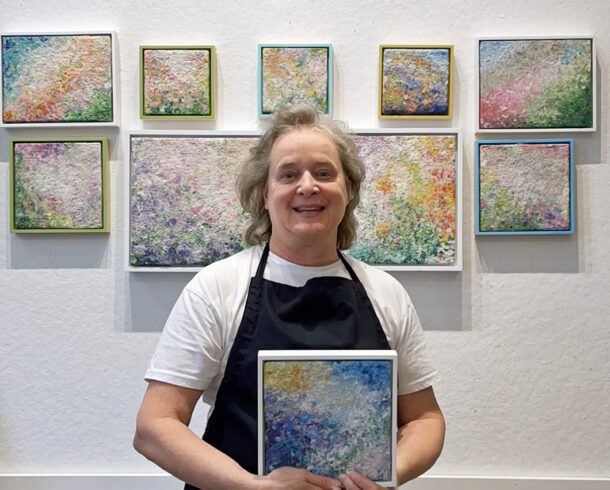Jul 22, 2009 | Pulp painting
A closer look at the painting after the turkey baster has been used to apply pulp to designated areas. See Monday July 20 blog for photo of application of pulp.
Jul 20, 2009 | Pulp painting
The turkey baster is used to apply larger quantities of pulp to the painting surface. I place approximately one cup of pigmented pulp into a plastic container (such as a yogurt container) and fill the rest of the container with water. I then suck the pulp up into...
Jul 14, 2009 | Pulp painting
The squeeze bottle holds over-beaten pulp that can be used for detailed areas of the painting. In the photo above, I am squeezing over-beaten pulp, which has been diluted in a cup of formation aid, onto the surface of the painting “Changing Seasons” shown here in...
Jul 13, 2009 | Pulp painting
The term “Tools” can be used to describe a lot of the made up concoctions I use to create a handmade paper painting. In the photo above, I am using one of my favorite made up tools: an embroidery needle wedged into the eraser end of a number 2 pencil. I use this...
Jul 8, 2009 | Pulp painting
Re-working into a handmade paper painting is tricky. The water used in the pulp that is applied to the surface of the in-progress painting warps it, and it can take a fair amount of labor to re-stretch the painting so that it lies flat again. To off-set the negative...
Jul 3, 2009 | Pulp painting
Painting with over beaten pulp can take a while to get comfortable with. Before going into a lot of detail of how to work with over-beaten pulp, let’s answer the important question of “What is over-beaten pulp?” Over-beaten pulp refers to pulp that has been beaten...
